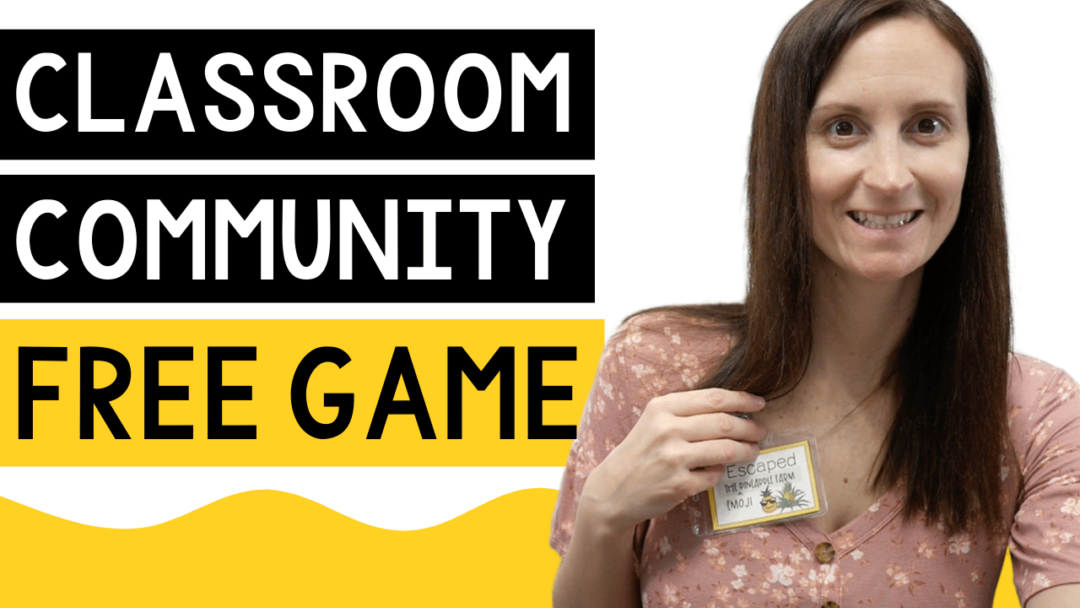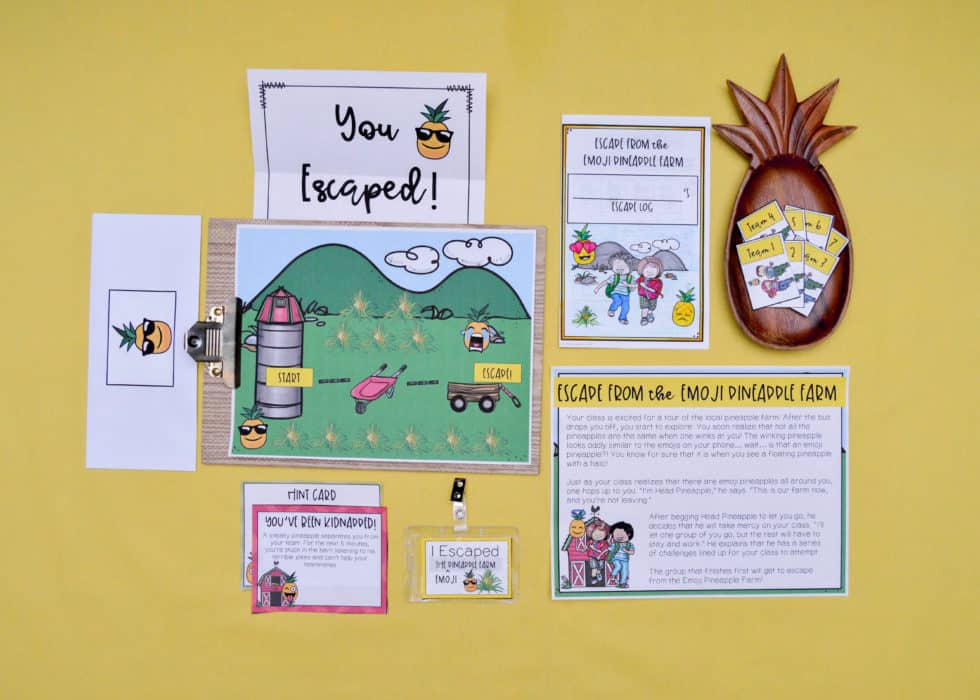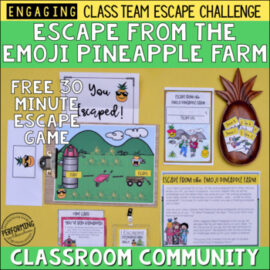Today we are talking about the foundation of my classroom management strategy—building classroom community. We can’t effectively help our students, or work on behaviors with them, if we don’t have relationships formed. We also can’t help students work on issues that they have with each other without a positive and strong classroom community. I’m going to share the best way to establish a positive classroom community, whether it’s the start of the school year or mid-year and you’re at your wit’s end with classroom behavior.
Skip to the good stuff and download my free classroom community building escape game! You can download it here.

I wish I had known about building a classroom community when I first started teaching. Instead, there was a heavy focus on classroom management and managing behaviors, but not a lot of information on setting up a good community of trust from the start. Setting up that community is the foundation of classroom management, not constantly having to monitor and correct behavior.
I feel this is a missed opportunity in school and trainings because classroom community is really important.
What is classroom community?
Classroom community is just building a community in your classroom that encourages all students to share their thoughts and feelings in an environment that allows them to feel comfortable doing so. It also creates a space where students can work together and feel they are valued and have something to contribute. Students need to know they have strengths and can use them through collaboration.
When we talk about building community, we’re talking about the following three things.
1. Teamwork
Our students work together a lot and they don’t always get along. We need to foster teamwork by helping students learn how to discuss and argue in a positive way that doesn’t leave someone feeling left out.
Anything that fosters the relationship between students and allows for them to agree to disagree on occasion is very helpful.
2. Student Voice
Student voice is another missed opportunity that we have in our lessons, classroom community, and classroom management as a whole. Our students know there are rules in the classroom. So, the beginning of the year is a good time to set rules and expectations, but allow students to have input in the process.
Instead of writing rules on the board or going through a powerpoint to tell students what to do, sit down with students and talk to them about setting classroom expectations. This way, they are part of the discussion, have more buy-in, and feel you care about their opinion. They’re likely going to share a lot of the rules and procedures you already have in place, but fostering that discussion allows for students to have a voice.
3. Building relationships
Buildling relationships is the most important thing we do the first week of school. We spend a lot of time asking students about themselves and having conversations with them. If we jump too much into our curriculum the first week of school to try to get it down, we miss that opportunity for getting to know our students and building trust and respect with them and the other students.
You need to build in a lot of time to have conversations with students. I’m not just talking about a one-time writing prompt where you ask them about their favorite things. That is not enough.
We need to be working with students on tasks throughout the entire first week and beyond where we learn more about them and what they’re interested in. We can use this to build our relationship further when we need to build a classroom management strategy.
The way I get through to tough students who I’m struggling with in their behaviors is by knowing what they’re interested in and what drives them, along with having that relationship in place.

Community Building Activity
The community building activity I’m about to share is really good for teaching students about classroom community without making them go through boring reading passages and having a discussion they’re not interested in. I’m not going to say we’re tricking them into having a discussion about classroom community, but it helps when something is a game.
Class Team Escape Challenge

This is a really fun escape room game, I use with my students. The students get really into it. It’s emoji themed, has to do with classroom community, and it’s FREE! You can download it here.
This is a one-hour escape room. It teaches students to celebrate the success of others and talks about doing the right thing. It also helps with teamwork skills.
There are three-steps and it’s easy to fit into the first week of school or anytime that you need it.
Students work in teams to go from one step to the next until they escape. It’s a shortened escape room to allow them time to discuss the concepts they’re reading about.
Each student gets an escape log so they can write down the codes. They can also write down what the envelope asks them about. For example, one asks about being patient and another talks about compassion. As they go through the journey, they work as a team and all contribute.
Throughout the escape room, you will start to see:
- Students who are natural leaders
- Which students are interested in the discussion
- Which students are interested in puzzle solving
You being to see them work together well and figure out where they have their strengths. This helps them feel more comfortable working in teams as they continue through the year.

Prep work
All you need to do is make a copy of each challenge for each group. So, if you have six groups, you’ll need six copies. I keep all the copies for each challenge in separate envelopes. For example, challenge two is about being patient. Inside the envelope is a text about competitiveness. You put a copy for each group inside the envelope and then it’s good to go. When students come to you and have solved challenge #1, you hand them their group’s copy of challenge #2.
I also love to make badges for students. I get the badges at Walmart for around $8 and it makes about 30 of them. You can print the badge out from the download and students can proudly wear it to show they “escaped”.
Follow-up conversations
If you use this activity at the beginning of the year, you can follow it up with talking about what the class learned about community and teamwork. You can create an anchor chart or write on the board talking about things students struggled with during the challenge and how to overcome them. You can have students discuss what character traits they learned about in the groups that they liked and which ones they didn’t like.
These conversations open the door to talk about how to interact with someone when they rub us the wrong way. We can share how we can handle it with grace and still support the other person.
From there, we can go straight into setting classroom rules, expectations and procedures. As a group, we can write the rules and expectations down and create a poster so students can refer to it throughout the year.
Just like that, we’ve started the year off with a really fun game where we’ve learned so much about each other. The game then spiraled into a great conversation about how we treat others and then into setting our rules and procedures for the classroom. Best of all, we have buy-in from students because they were part of the process.
That’s why I believe this is the best way to establish classroom community, set a strong foundation for the classroom management system and focus on rules and procedures. Then, we’re ready to go for the year.
Thank you for caring about your students and building a positive experience so they can love coming to school. If you want to try this community building escape activity, download it here and share with me in the comments any activities you have done in the past to build community in your classroom.

